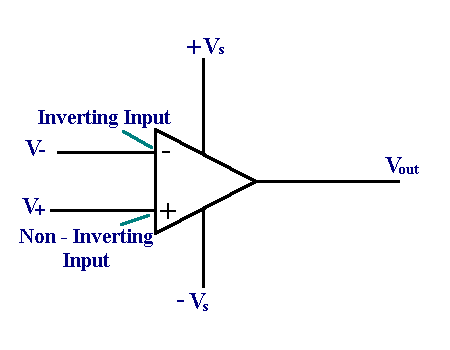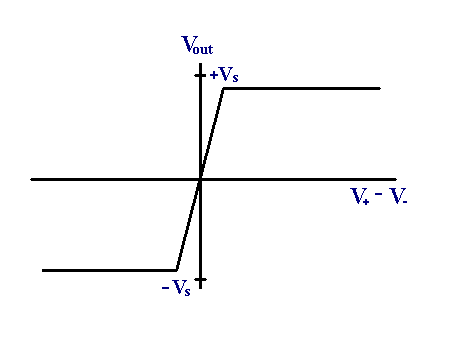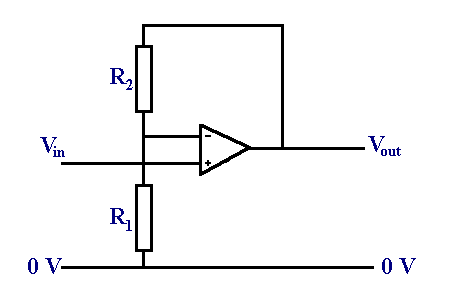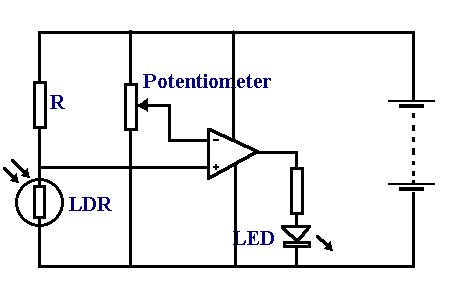| |
|
|
||||||||||||
| |
||||||||||||||
|
|
|
|
|||||||||||
| Electronics - AS Module 1 & 2 Operational Amplifiers An operational amplifier is a very high gain amplifier. Op amps can be used in many different ways. Two of the most common uses are a) as comparators b)
as amplifiers (either NON-INVERTING or INVERTING amplifiers) An op amp has TWO inputs; one non-inverting (called the "+" input) and one inverting (called the "-" input). The voltage at the output (Vo) depends on the DIFFERENCE between the voltage at the non-inverting input (V+) and the voltage at the inverting input (V-). Expressed mathematically,
where A is the gain or voltage amplification of the op amp (typically 100000) The diagram below shows an op amp's circuit symbol
For an ideal op-amp Vout = Gain(V+ - V- )
V+ is the voltage input to the non-inverting input.
Input Resistance The Inverting Amplifier Using the second approximation for the Op-Amp, V+ = V- = 0 Volts
The potential difference across R1 is Vin I = Vin/ R1
Using the first approximation for the Op-Amp, no current flows through
the Op-Amp.
V = I R2 Since the output MUST be at a lower potential than the point X, Vout must be negative. Vout = -VinR2/ R1 Gain = Vout/Vin = -R2/ R1 This is known as an
inverting amplifier, because a positive voltage IN gives a negative
voltage OUT. V+
= Vin Using the second approximation for the Op-Amp V+ = V- And so Vin = R1 Vout/ R1 + R2 or Vout/Vin = R1 + R2/ R1 And so Gain = 1 +(R2/ R1) NOTE. The amplification
(gain) depends only upon the value of the resistors. It does NOT
depend upon the Op-Amp as long as the approximations are valid.
|
|
|||||||||||||
| |
||||||||||||||
| |
|
|
|
|
||||||||||




